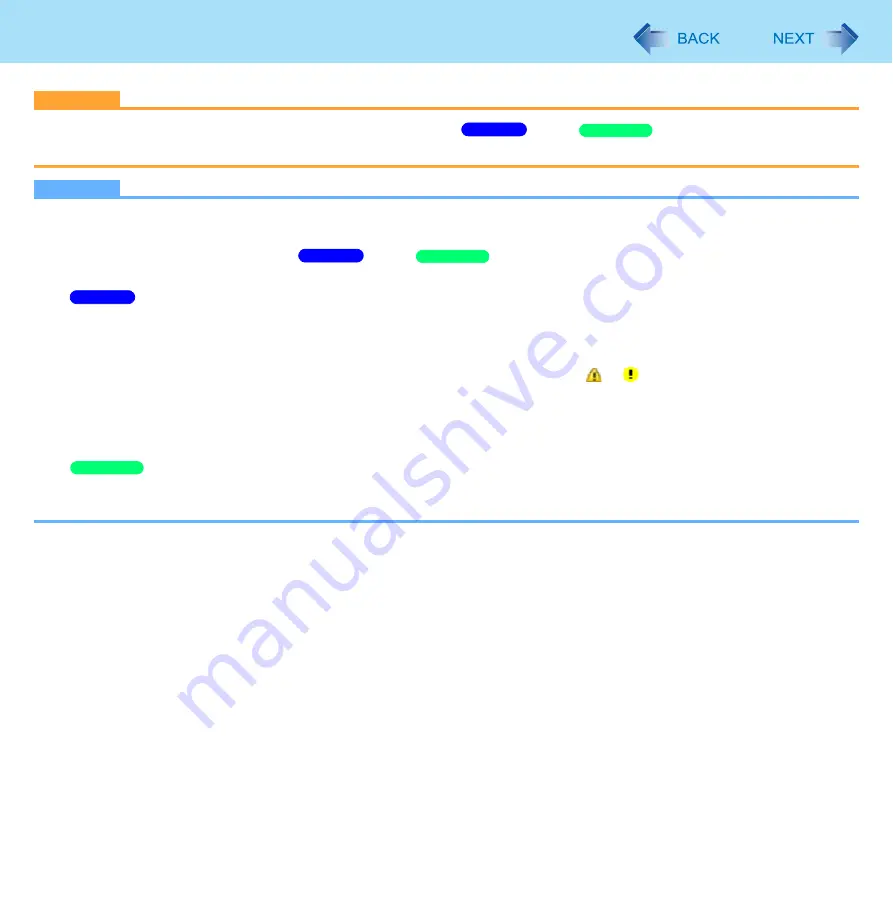
109
USB Devices
CAUTION
Do not remove a USB device while your computer is in the
sleep/
standby or hibernation.
Save important data and close all applications.
NOTE
You may need to install the driver for the USB device. Follow the instruction manual of the USB device.
You may need to install the driver again when connecting the device to another port.
When a USB device is connected,
sleep/
standby and hibernation may not function normally. If
the computer does not start up normally, remove the USB device and restart the computer.
If the computer enters sleep or hibernation while a USB keyboard or mouse is connected, touching the
USB keyboard keys or mouse will resume the computer.
Some devices will not operate when connected to a USB HUB. These devices must be connected directly to the USB
port on your computer.
When the USB device is removed and then inserted while the computer is on, or may appear in the Device
Manager and the device may not be correctly recognized. In this case, remove and connect the device again, or
restart the computer.
When a USB device is connected, power consumption increases. Remove the USB device when it is not in use,
especially when operating by battery power.
When you connect a USB device immediately after you disconnected a USB device, the newly connected
USB device may not be recognized.
If this happens, disconnect the USB device, and restart the computer.
Windows 7
Windows XP
Windows 7
Windows XP
Windows 7
Windows XP






























